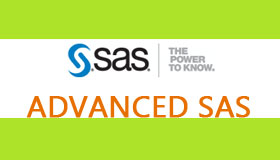 |
SAS Training Sydney is providing the best SAS Training in budget price from Sydney.
Custom lessons with specific terminology and examples from real-world business.
Additional Free Job Consultation benefit.
Start brightening your career with us today!
Available One-to-One training option will really make a difference and proves beneficial to the candidates by making them an expert in SAS® programming.
Accessing Data Using SQL
- Generate detail reports by working with a single table, joining tables, or using set operators in the SQL procedure.
- Generate summary reports by working with a single table, joining tables, or using set operators in the SQL procedure.
- Construct sub-queries and in-line views within an SQL procedure step.
- Compare solving a problem using the SQL procedure versus using traditional SAS programming techniques.
- Access Dictionary Tables using the SQL procedure.
Macro Processing
- Create and use user-defined and automatic macro variables within the SAS Macro Language.
- Automate programs by defining and calling macros using the SAS Macro Language.
- Understand the use of macro functions.
- Use various system options that are available for macro debugging and displaying values of user-defined and automatic macro variables in the SAS log.
- Create data-driven programs using SAS Macro Language.
Advanced Programming Techniques
- Demonstrate the use of advanced data look-up techniques such as array processing, hash objects, formats, and combining/merging data.
- Reduce computing resource requirements by controlling the space required to store SAS data sets using compression techniques, length statements, or eliminating variables and observations.
- Develop SAS programs which incorporate data step views and use the FCMP procedure.
- Perform effective benchmarking by using the appropriate SAS System options and interpreting the resulting resource utilization statistics.
- Identify appropriate applications for using indexes and create them using the DATA step, the DATASETS procedure, or the SQL procedure.
- Compare techniques to eliminate duplicate data using the DATA step, the SORT procedure, and the SQL procedure.
|
